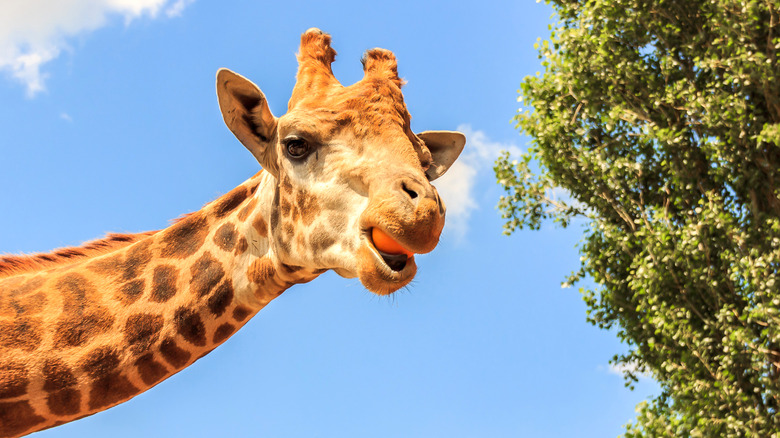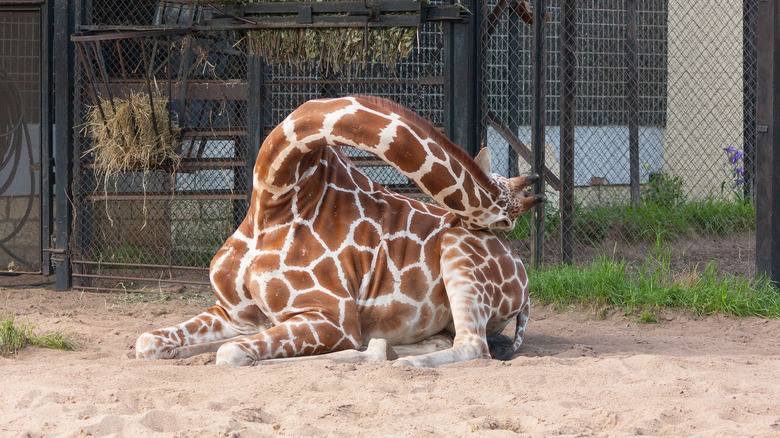The Surprising Amount Of Time Giraffes Spend Sleeping Per Day
Giraffes are among the most fascinating animals in the wild. An average adult giraffe is can be up to 18 feet (or 4 to 5 meters) tall, which makes them the tallest mammal in the world, according to Discover Wildlife. They are originally from Africa and used to live in North and West Africa, but now they are only found in sub-Sarahan Africa.
Although most people believe all giraffes are the same, researchers recognize nine subspecies of giraffes (via Giraffe Conservation). The spot pattern helps identify the subspecies, but they are also unique in each animal, just like human fingerprints. Discover Wildlife reports that giraffes can recognize each other, thanks to their distinct patterns.
Unsurprisingly, their long neck affects many of their habits, including how they sleep and drink water. Giraffes get most of the water they need from plants they eat during the day, so they don't feel thirsty often. However, when they need water, they have to spread their front legs to reach the ground.
Giraffes sleep fewer than five hours per day
Unlike humans, giraffes don't need to sleep seven or eight hours per day. According to Sleep Foundation, an average giraffe only clocks 4.6 hours. They often sleep during the night, but they also take short naps during the day that can last up to 35 minutes. Although they can lay down to rest, this position makes them an easy target to predators, so they will often sleep while standing up. While laying down, they will fold their legs under their body, but will often keep their necks held high (via Giraffe Conservation).
Most wild animals don't need much sleep. According to Sleep.org, deer and walruses sleep between three and four hours per day, while migrating birds will only need one hour per day. However, other animals need to sleep long hours. According to Habitat, the record belongs to the North American Opossum. The tiny marsupial has an average sleep time of 18 hours.

